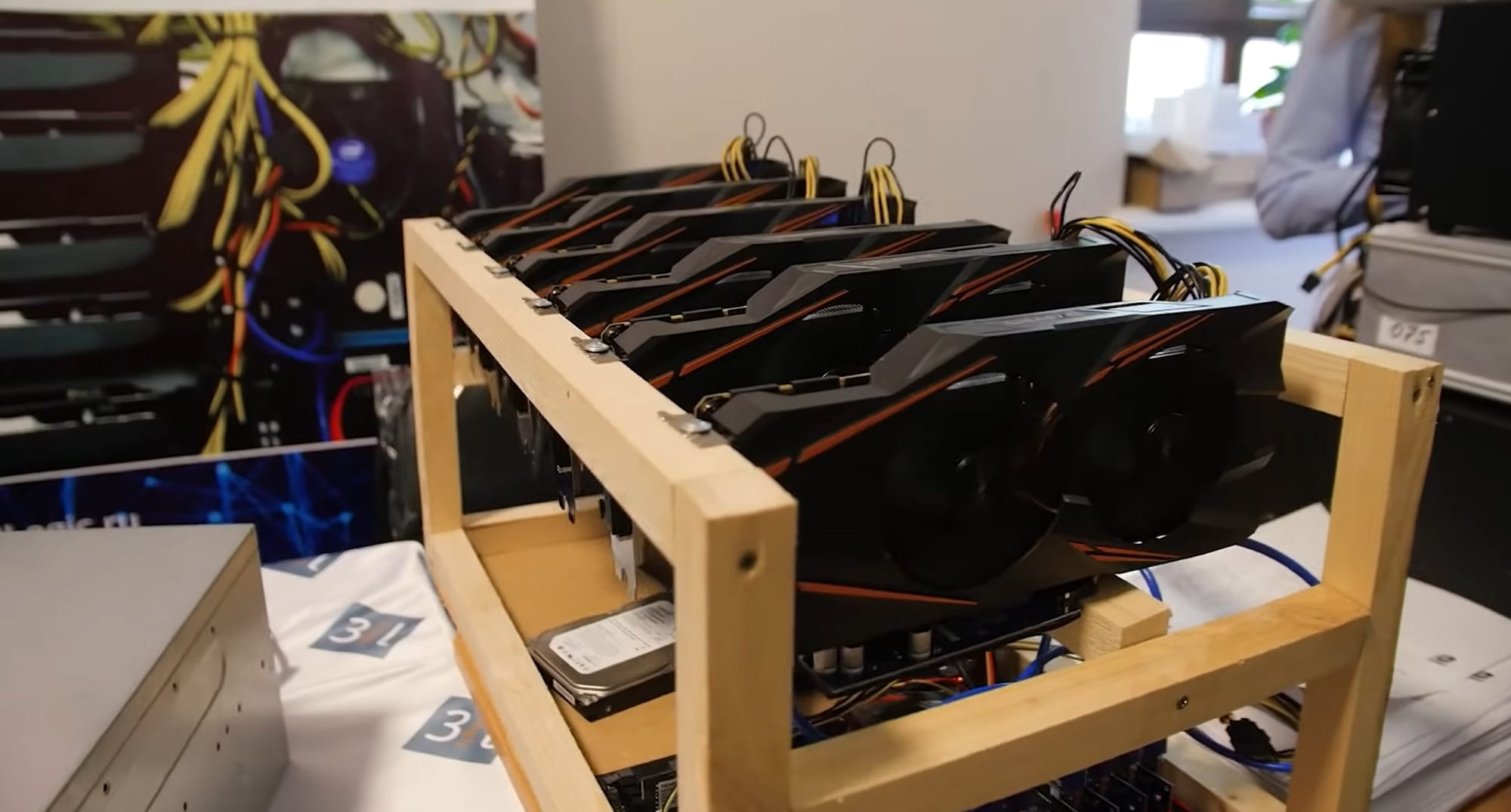Proof of Work vs. Proof of Stake
The debate between Proof of Work (PoW) and Proof of Stake (PoS) is reshaping the crypto world. With Ethereum's shift to PoS, is mining becoming obsolete? Explore the benefits, challenges, and future of these consensus mechanisms in blockchain networks.

The backbone of any cryptocurrency lies in how its network processes transactions and maintains security. This is where crypto mining comes in. It plays a crucial role in verifying transactions, securing the blockchain network, and ensuring decentralization.
However, not all cryptocurrencies rely on the same mining method. Bitcoin mining uses Proof of Work (PoW), which requires powerful computers to solve mathematical problems. Meanwhile, newer cryptocurrencies are adopting Proof of Stake (PoS), a more energy-efficient alternative that doesn’t require expensive mining hardware.
Understanding the difference between PoW and PoS is key to knowing how crypto mining works today. This guide will explain both mechanisms, their benefits, and which cryptocurrencies use them.
The Role of Mining in Blockchain Networks
At its core, crypto mining is the process of validating transactions and adding them to a blockchain network. This prevents double spending, ensuring that digital assets cannot be duplicated or altered. Miners use specialized mining hardware to solve complex mathematical problems, securing the network.
Here’s why mining is essential:
- Transaction Verification: Miners confirm that transactions are legitimate before they’re added to the distributed ledger.
- New Coin Creation: In Proof of Work (PoW) systems like Bitcoin mining, new coins are generated as rewards for miners.
- Network Security: Mining makes it nearly impossible for hackers to alter past transactions without enormous computing power.
The Importance of Decentralization
One of the biggest advantages of crypto mining is decentralization. Unlike traditional banking, where a central authority controls transactions, blockchain networks are distributed across thousands of computers worldwide.
This has several benefits:
- No Single Point of Failure: A decentralized system means no government or institution can shut it down.
- Trustless Transactions: No need for third parties like banks—transactions are verified by miners instead.
- Resistance to Fraud: Since the blockchain ledger is public and immutable, it’s extremely difficult to manipulate.
However, mining challenges exist, including high energy consumption and increasing mining difficulty. This is why alternative models like Proof of Stake (PoS) have emerged as potential solutions.
Proof of Work (PoW) Explained

Proof of Work (PoW) is the original consensus mechanism used in crypto mining. It requires miners to solve complex mathematical problems using high-powered mining hardware. The first miner to solve the problem gets to add a new block to the blockchain network and receives a mining reward in return.
Here’s how the process works:
- Transaction Verification: Miners gather transactions and verify them.
- Puzzle Solving: Computers compete to solve cryptographic puzzles.
- Block Creation: The first to solve it adds a new block to the distributed ledger.
- Reward Distribution: The miner earns newly minted coins and transaction fees.
This method ensures blockchain security but comes at a cost—high energy consumption and expensive mining difficulty.
Energy Consumption and Security Concerns
A major criticism of Proof of Work (PoW) is its high energy usage. Mining requires an enormous amount of electricity, leading to concerns about environmental impact.
For example:
- Bitcoin mining consumes more energy than entire countries like Argentina.
- Large-scale mining operations rely on fossil fuels, increasing carbon emissions.
- Governments in countries like China have banned mining due to its high energy costs.
Despite these issues, PoW remains highly secure because altering a blockchain ledger would require controlling more than 50% of the network’s computing power—an almost impossible task.
Popular PoW Cryptocurrencies

Several major cryptocurrencies still use Proof of Work (PoW), including:
- Bitcoin (BTC): The first and most valuable crypto asset, still using PoW.
- Ethereum Classic (ETC): Maintains PoW after Ethereum’s shift to Proof of Stake (PoS).
- Litecoin (LTC): Uses a modified PoW algorithm called Scrypt, allowing for faster transactions.
Even with energy concerns, PoW continues to dominate the crypto space due to its security, decentralization, and reliability.
Proof of Stake (PoS) Explained

Proof of Stake (PoS) is a consensus mechanism designed as a more energy-efficient alternative to Proof of Work (PoW). Instead of requiring miners to solve complex puzzles, validators are chosen based on the amount of cryptocurrency they stake in the network.
Here’s how PoS staking works:
- Users lock up coins in a smart contract.
- The blockchain selects validators based on the size and duration of their stake.
- Validators confirm transactions and propose new blocks.
- They earn staking rewards, similar to how miners receive block rewards in PoW mining.
Since PoS doesn’t require high-powered mining hardware, it drastically reduces energy consumption and hardware costs.
Benefits of PoS Over PoW
Proof of Stake (PoS) has gained popularity because it solves several problems associated with crypto mining under PoW.
- Energy Efficiency: PoS reduces electricity consumption by up to 99% compared to PoW.
- Lower Entry Costs: No need for expensive ASIC miners or GPU mining rigs.
- Scalability: PoS-based blockchains process transactions faster and handle more volume.
- Decentralization Risks: While PoW mining favors those with high hash power, PoS could lead to wealth concentration, where the rich earn more rewards.
Examples of PoS-Based Cryptocurrencies
Several major blockchains have transitioned to or launched with Proof of Stake (PoS):
- Ethereum (ETH): Shifted from PoW to PoS in 2022 via "The Merge."
- Cardano (ADA): Uses the Ouroboros PoS algorithm for high efficiency.
- Solana (SOL): Combines PoS with Proof of History (PoH) for fast transactions.
- Polkadot (DOT): Implements Nominated Proof of Stake (NPoS) for better security.
With the success of these networks, PoS staking is becoming the preferred method for securing blockchain networks without excessive energy waste.
Mining vs. Staking: Technical Differences

In PoW mining, transactions are confirmed through intense computational work, making it resource-intensive. Mining hardware, such as ASIC miners, is required to solve cryptographic puzzles. This secures the network but comes at the cost of high energy consumption.
In contrast, PoS staking eliminates the need for energy-intensive mining. Instead, validators are chosen based on how many coins they have staked. The more a user stakes, the higher their chances of validating transactions and earning staking rewards.
Security and Decentralization: Which is More Secure?
- PoW Security. Since PoW requires enormous computational power, it is highly secure against 51% of attacks. However, mining centralization in large mining pools can pose a risk.
- PoS Security. PoS is less vulnerable to energy-based attacks, but wealth concentration can lead to centralization, as those with more coins control the network.
Energy Consumption: PoS as an Eco-Friendly Alternative
One of the biggest criticisms of crypto mining is its impact on the environment.
- PoW consumes vast amounts of energy, with Bitcoin mining alone using as much electricity as some small countries.
- PoS reduces energy usage by up to 99%, making it a greener alternative.
Future of Consensus Mechanisms
Ethereum was one of the largest PoW networks until The Merge, when it switched to Proof of Stake (PoS). This shift aimed to:
- Reduce energy consumption by 99.9%
- Lower transaction fees by increasing efficiency
- Improve scalability for faster processing
Hybrid Models Combining PoW and PoS
Some blockchain networks are experimenting with hybrid consensus mechanisms, which use both PoW and PoS:
- Decred (DCR): Uses PoW for mining but allows PoS validators to verify blocks.
- Zilliqa (ZIL): Uses PoW for initial security but PoS for fast transaction processing.
These models attempt to balance security, decentralization, and energy efficiency, combining the strengths of both systems.
Will Crypto Mining Become Obsolete?
With growing regulatory pressure and high energy costs, traditional crypto mining is facing challenges:
- Many countries have banned or restricted PoW mining due to environmental concerns.
- The rise of energy-efficient PoS is making mining less attractive for new entrants.
- Cloud staking is gaining popularity, allowing users to participate in network security without expensive mining hardware.
Conclusion
Both Proof of Work (PoW) and Proof of Stake (PoS) play crucial roles in crypto mining and blockchain security. PoW remains the most battle-tested mechanism, offering high security and true decentralization. However, its energy consumption and hardware costs make it less sustainable in the long run.
On the other hand, PoS staking provides a more eco-friendly and scalable alternative. With networks like Ethereum, Cardano, and Solana thriving under PoS, the shift away from PoW mining is gaining momentum.
FAQs
Why is Proof of Work more energy-intensive than Proof of Stake?
PoW mining requires solving complex mathematical puzzles, which demands massive computing power. This leads to high electricity consumption and hardware requirements. In contrast, PoS staking selects validators based on their holdings, eliminating the need for energy-intensive mining.
Can You Mine Proof of Stake Cryptocurrencies?
No, PoS-based cryptocurrencies don’t require mining. Instead, users stake their coins to become validators. This process replaces crypto mining with a more energy-efficient validation method.
Which Cryptocurrencies are Switching from PoW to PoS?
Several major projects are moving away from PoW mining:
- Ethereum (ETH): Transitioned from PoW to PoS in 2022.
- Zcash (ZEC): Considering a shift to PoS for better energy efficiency.
- Dogecoin (DOGE): Exploring a hybrid model to reduce electricity costs.
Is PoW Mining Still Profitable?
Bitcoin mining and other PoW cryptocurrencies remain profitable but require high-end ASIC miners, low electricity costs, and access to mining pools. However, as network difficulty rises and halving events reduce rewards, PoS staking is becoming a more attractive option for passive income.



